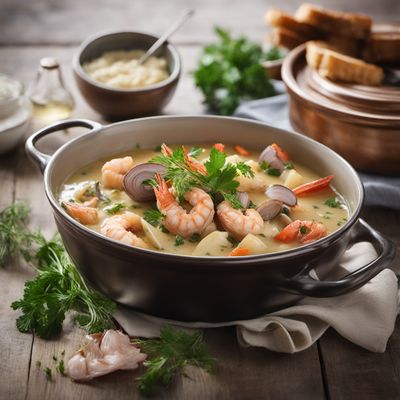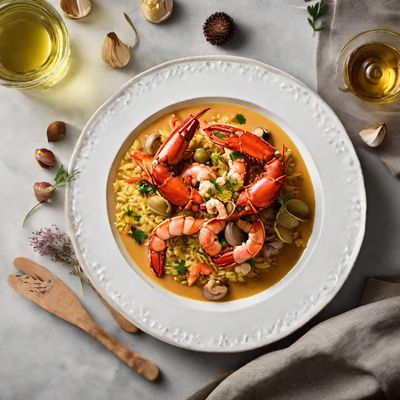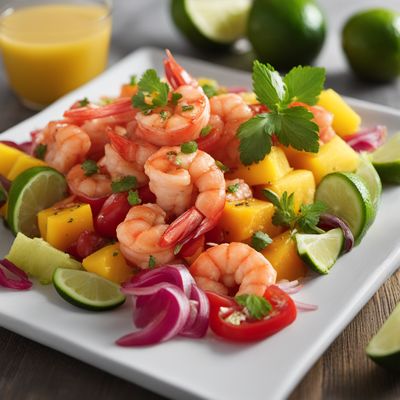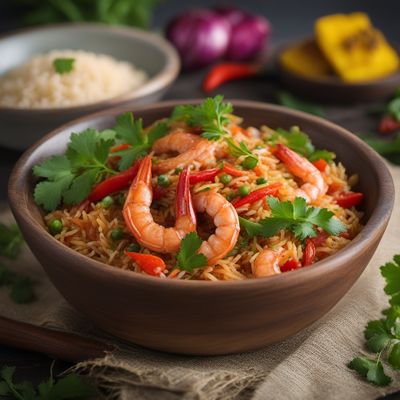
Ingredient
Lobster, american
Oceanic Delicacy
American lobster, also known as Maine lobster, is a crustacean with a distinctive appearance. It features a hard exoskeleton, a pair of large claws, and a long, segmented body. The meat of the American lobster is tender, sweet, and succulent, with a slightly briny taste. Its vibrant red color adds visual appeal to any dish it graces. American lobster is highly regarded in culinary circles and is commonly used in dishes like lobster bisque, lobster rolls, and grilled lobster tails.
Origins and history
American lobster has a rich history intertwined with New England's coastal communities. Native Americans and early European settlers relied on lobster as a valuable food source. Over time, lobster became a delicacy associated with luxury and indulgence. Today, American lobster is harvested along the Atlantic coast of North America, particularly in Maine, and is enjoyed in various preparations around the world.
Nutritional information
American lobster is a low-fat seafood option that is rich in protein, vitamins, and minerals. It is a good source of omega-3 fatty acids, which are beneficial for heart health. However, it is also relatively high in cholesterol, so it should be consumed in moderation as part of a balanced diet.
Allergens
May contain allergens such as shellfish.
How to select
When selecting live American lobsters, look for ones that are lively and active, with intact claws and a hard shell. Avoid lobsters that appear weak, lethargic, or have a strong ammonia smell. For cooked lobster meat, choose reputable suppliers that offer fresh, high-quality products. Look for firm, moist, and odorless meat with a vibrant red color.
Storage recommendations
To maintain the freshness and quality of live lobsters, store them in a cool, damp place, such as a refrigerator or an ice-filled cooler. Keep them covered with a damp cloth or seaweed to prevent them from drying out. Cooked lobster meat should be refrigerated and consumed within a day or two for optimal flavor and texture.
How to produce
American lobsters are typically caught using lobster traps or pots. To produce lobsters, one would need access to suitable coastal waters, the necessary permits, and the equipment to set and retrieve lobster traps. It requires knowledge of lobster behavior, fishing regulations, and proper handling techniques to ensure sustainability and the well-being of the lobsters.
Preparation tips
When preparing lobster, it is essential to handle it with care to preserve its delicate texture and flavor. Lobster can be boiled, steamed, grilled, or baked, depending on the desired outcome. It is often served with melted butter, lemon wedges, or in various sauces. Lobster meat can be used in dishes like lobster bisque, lobster rolls, pasta dishes, and salads. The shells can be used to make flavorful stocks and broths.
Substitutions
Crab meat, shrimp, or langoustine can be used as substitutes for lobster in certain recipes. However, the unique flavor and texture of lobster cannot be replicated entirely.
Culinary uses
American lobster is highly versatile and can be used in a wide range of culinary applications. It is commonly featured in dishes like lobster bisque, lobster rolls, lobster mac and cheese, lobster salad, and grilled lobster tails. It is also a popular ingredient in upscale seafood platters and surf and turf combinations.
Availability
American lobster is commonly available and cultivated along the Atlantic coast of North America, particularly in Maine. It is also exported to various countries around the world, making it accessible in many seafood markets and restaurants.
More ingredients from this category
Recipes using Lobster, american

Haute Cuisine Ceviche
Elevated Peruvian Delight: Haute Cuisine Ceviche

Budae Jjigae - Haute Cuisine Style
Gourmet Army Stew: A Fusion of Flavors

New England Style Seafood Fricassee
Oceanic Delight: New England Seafood Fricassee

Haute Cuisine Paella
Elevating the Classic Spanish Paella to Haute Cuisine Perfection

Antiguan Cold Plate
Tropical Delight Cold Plate

New England Style Seafood Stew
Ocean Delight: A Taste of New England's Finest Seafood Stew

Antiguan and Barbudan Style Mountain Rice
Tropical Delight: Antiguan and Barbudan Mountain Rice